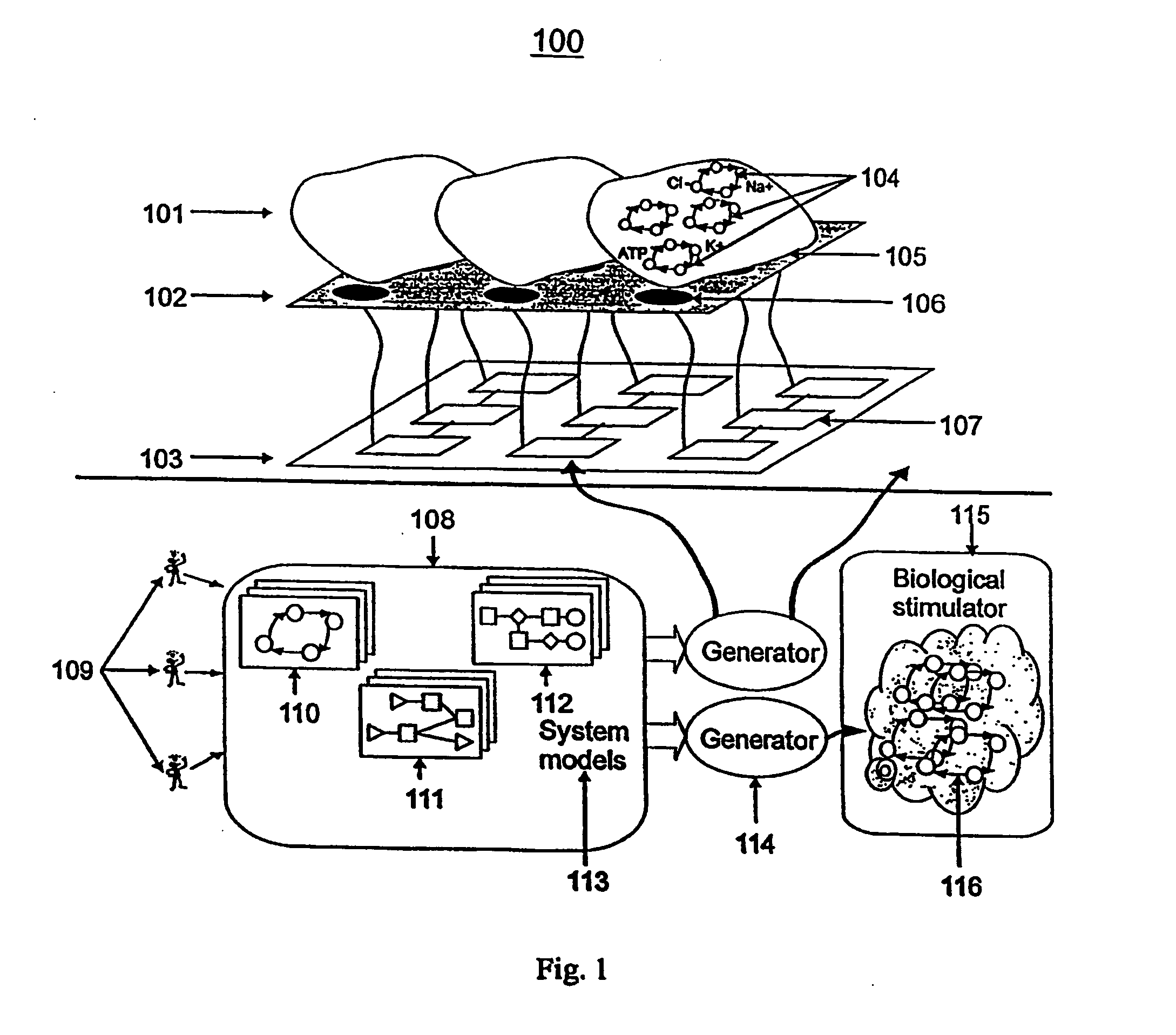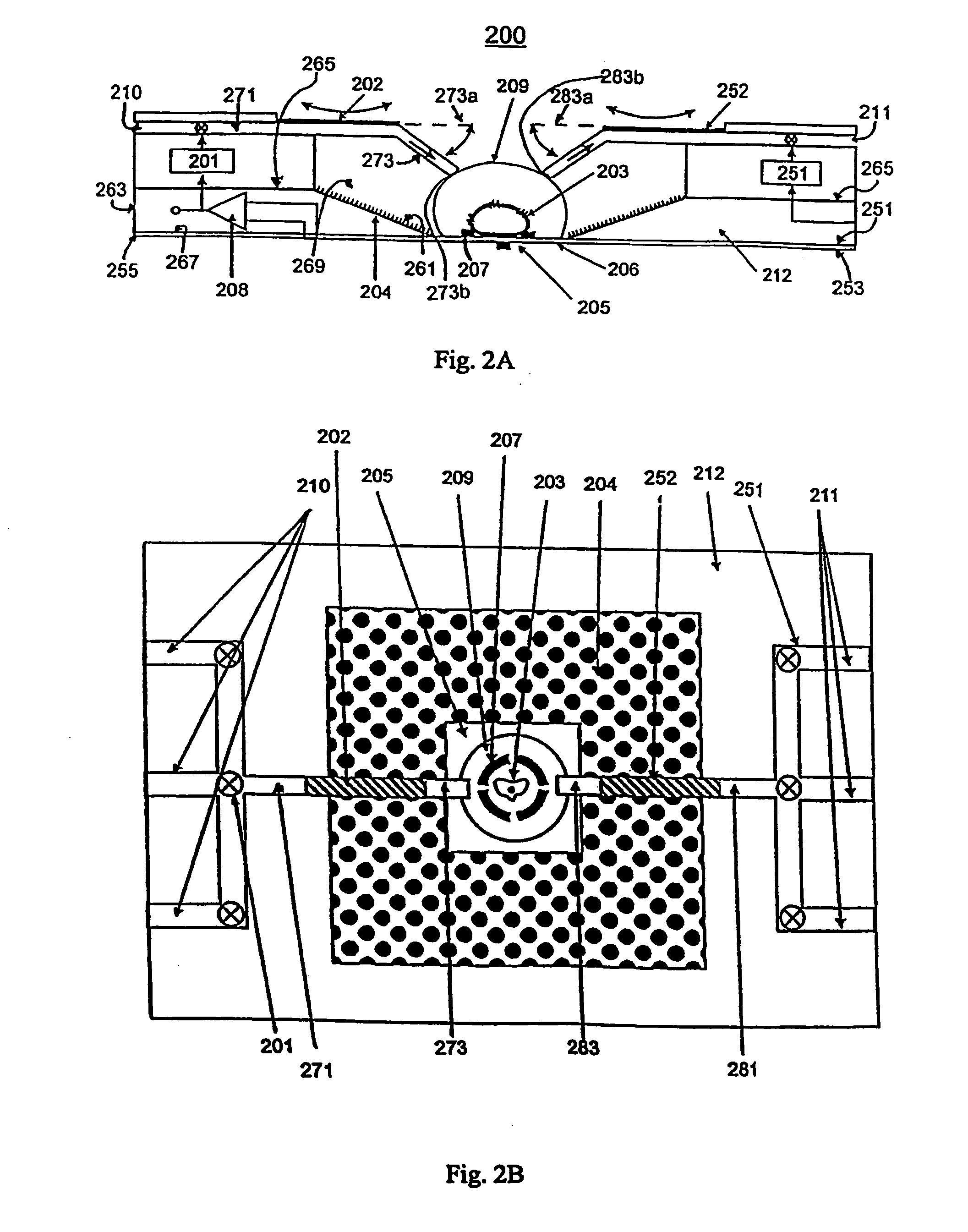Device and methods for detecting the response of a plurality of cells to at least one analyte of interest
- Summary
- Abstract
- Description
- Claims
- Application Information
AI Technical Summary
Benefits of technology
Problems solved by technology
Method used
Image
Examples
example 1
Biosignatures Matrix
In one aspect of the present invention, a wide-spectrum, activity-detection technology is developed that employs several novel cell and membrane-based sensing technologies, in order to provide a complete bio-functional signature of a CBW agent, unknown drug, or other threat. The bio-functional signatures can be used with advanced algorithms to discriminate between different agents. The system and devices are extraordinarily versatile and general; because one unique feature of the present invention, among other things, is that the biological impact of the toxins is detected and measured, rather than the toxins themselves.
Today, biosensors use biological molecules (antibodies, enzymes, nucleic acids, etc.) for specific agent detection via specific binding reactions. Wide-spectrum detection is expensive, requiring a priori threat knowledge and a large quantity of specific cells. Assays are susceptible to overload from multiple threats and false detection and fro...
example 2
Nanophyiometer and Bioreactor
In one aspect, the present invention relates to an apparatus for monitoring the status of a cell, more particularly, for screening physiological and biochemical effects of one or more cells on the nanoliter to picoliter scale. Such an apparatus according to the present invention may be termed as a Nanophysiometer, which in no way should limit the scope of the invention.
FIG. 7 schematically shows a first embodiment of a Nanophysiometer according to the present invention. In FIG. 7, device 700 has a sensing volume 704 filled with a solution of media containing a single or multiple cells 701. The solution of media in the volume 704 can be modified or changed using an inflow channel 708 and an outflow channel 707, which are parts of a channel 721 that is in fluid communication with a supply or reservoir of media (not shown). The flow in each of the channels 707, 708 can be controlled by valves 703, individually or in cooperation.
The volume 704 is bounde...
example 3
Improved Sensor Head
In one aspect, the present invention relates to a device as shown in FIGS. 11(A)-(C) for detecting at least one analyte of interest either produced or consumed by at least one cell or cells 1107, wherein the at least one cell or cells 1107 is placed in a chamber 1128. In one embodiment of the present invention as shown in FIGS. 11(A)-(C), a device or a sensor head 1100 includes a body portion 1151 and a substrate 1153 defining a chamber 1128. The body portion 1151 can be circular, oval, square, or any other geometric shape cross-sectionally. In the embodiment shown, the body portion 1151 has a circular cross section. The substrate 1153 has a first surface 1155 and an opposite, second surface 1157. A membrane 1127 is positioned on the first surface 1155 of the substrate 1153. The membrane 1127 is partially transparent to allow optical signals passing through. For instance, in one embodiment as shown in FIGS. 11(A)-(C), the membrane 1127 comprises a Si / SiN membra...
PUM
| Property | Measurement | Unit |
|---|---|---|
| Angle | aaaaa | aaaaa |
| Angle | aaaaa | aaaaa |
| Angle | aaaaa | aaaaa |
Abstract
Description
Claims
Application Information
 Login to View More
Login to View More - R&D
- Intellectual Property
- Life Sciences
- Materials
- Tech Scout
- Unparalleled Data Quality
- Higher Quality Content
- 60% Fewer Hallucinations
Browse by: Latest US Patents, China's latest patents, Technical Efficacy Thesaurus, Application Domain, Technology Topic, Popular Technical Reports.
© 2025 PatSnap. All rights reserved.Legal|Privacy policy|Modern Slavery Act Transparency Statement|Sitemap|About US| Contact US: help@patsnap.com



